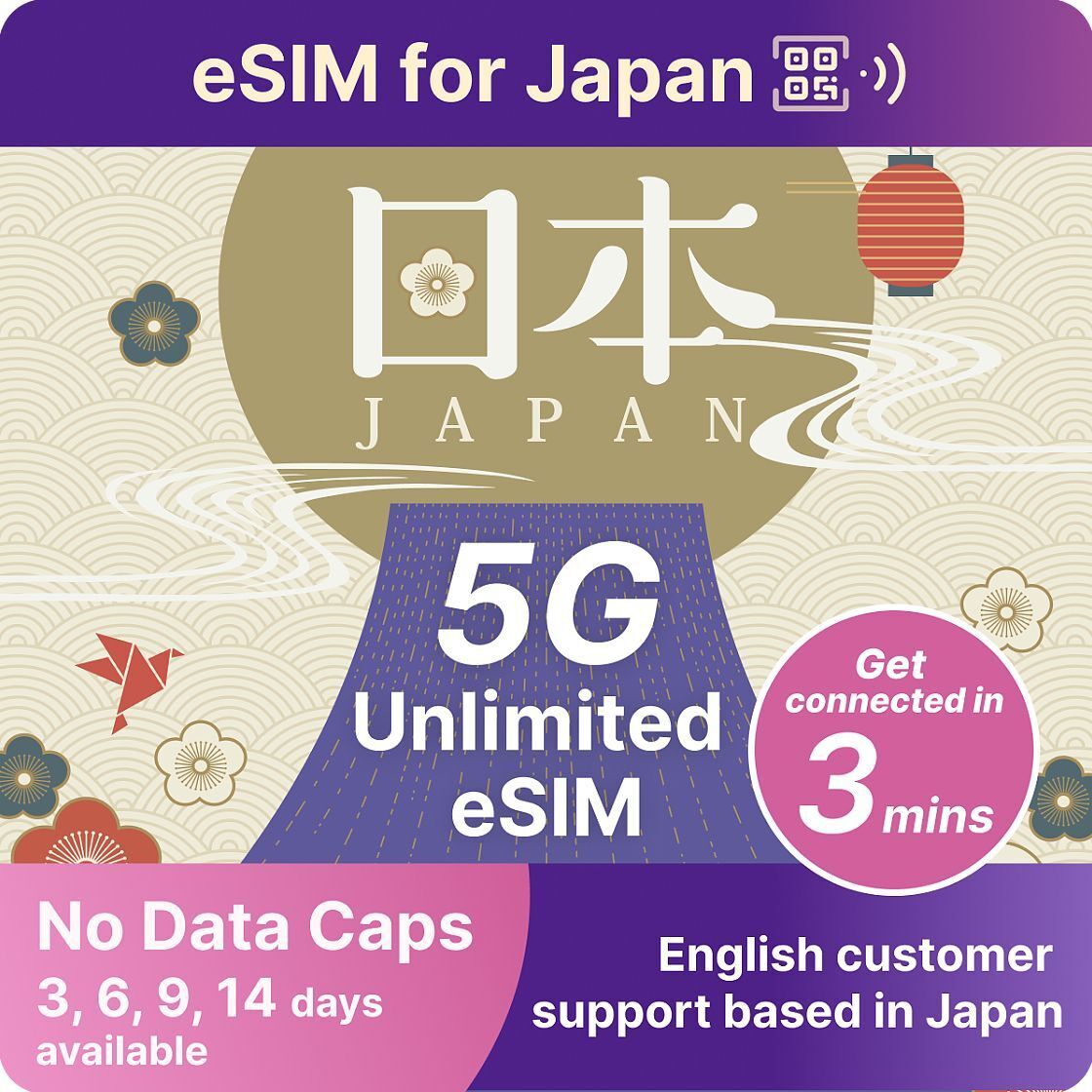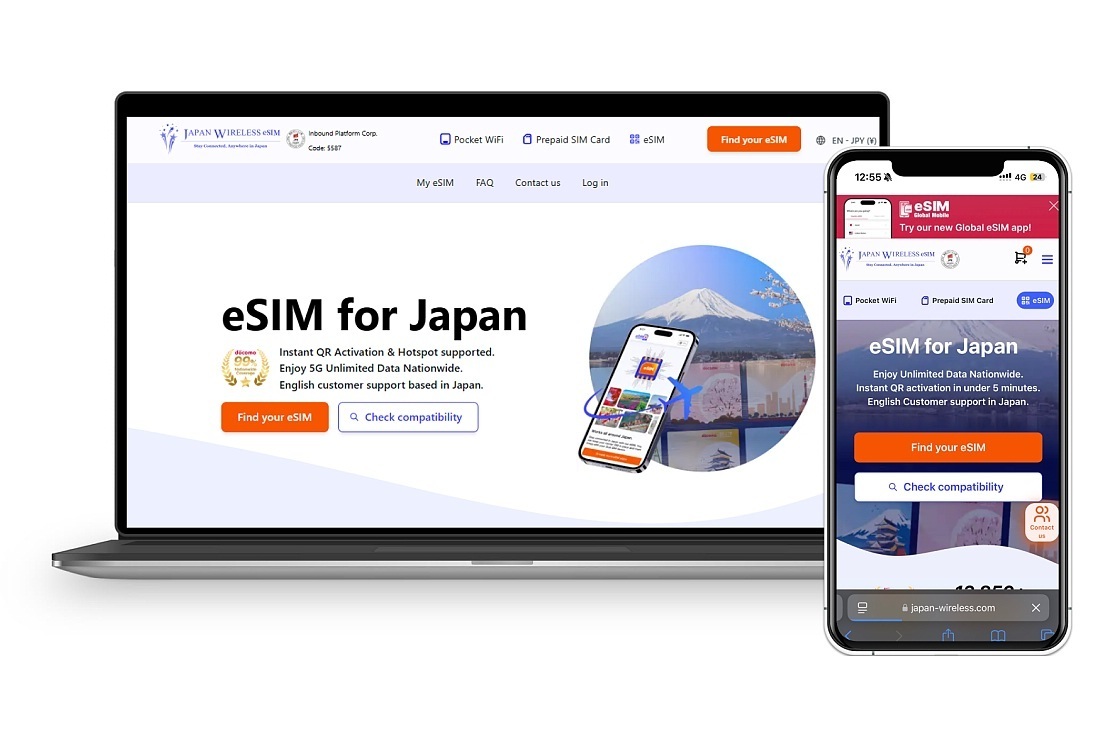Staying connected in Japan with eSIM
From finding your way to your hotel and navigating Japan's rail system to posting that perfect photo, a solid data connection has never been more essential for the traveler of today. With data roaming charges once again on the rise around the world and the very real risk of hidden or unexpected fees, what is the best way to guarantee that all important internet?
For many travelers, the answer may be eSIM - a relatively new technology already built into most modern smartphones, allowing users to switch their provider or service plan with just a few swipes. With this safe, stable and hassle-free method, there is no need for any physical components or to connect to public Wi-Fi networks that tend to be unreliable at best and can lead to unwanted spam messages.
In this article, we'll provide an overview of eSIM and its benefits, together with a step-by-step guide to get you started in time for your next Japan visit.
What is an eSIM?
Most of us will have come across regular SIM cards, standing for "subscriber identity module". A little smaller than the size of a postage stamp, these sit inside our mobile devices, determining our carrier, customer ID and phone number.
An eSIM - the "e" stands for "embedded" - fulfils the same function except in a digital form that can be activated remotely, removing altogether the need for a physical component. With the iPhone 14 and 15 dropping the SIM altogether in favor of eSIM for their US release, it's clear the technology is here to stay.
Key advantages and possible limitations
A travel eSIM from Japan Wireless brings with it a range of practical benefits, including some key advantages over pocket wifi devices:
- with no physical components to pick up or return, users receive their QR code instantly and can choose to activate straight away or up to 30 days later, giving you one less thing to worry about while planning your trip.
- Japan Wireless eSIMs are part of the KDDI network mobile network, which covers over 99% of the country and consistently ranks as the country's best for reach and availability. According to Opensignal's Mobile Network Experience Report, KDDI ranked first in 13 out of 18 categories when compared to the four major mobile network operators (MNOs) in Japan. Devices manufactured outside of Japan are fully supported, and customer support is available in 10 different languages and based in Japan, so there's no need to panic if you get stuck.
- Like a pocket wifi device but in contrast with some rental SIM cards, Japan Wireless eSIMs provide data, not minutes - but you can still use the service to chat face to face via messenger apps like Line or Whatsapp.
- To give you even more flexibility, plans are available in 5G unlimited on the KDDI Network, 4G unlimited, as well as fixed options from 3-50 gigabytes. Note that plans are currently limited to a maximum of 30 days, so a pocket wifi device or other alternative may be the way to go for visitors planning longer stays.
How to purchase and install your eSIM
The first thing to do is to check that your device has the necessary technology built in. For this, see below for some common examples or check online for a complete list of compatible devices.
Next, head to the Japan Wireless website and choose your data plan. If you have any questions about the service, you can also find a very comprehensive FAQ that also includes some handy tips, like how to check your data balance and exactly when this renews every day.
Once you've decided on the best plan for you, make your payment by credit card, Apple Pay or Google Pay. Prices start from just $7.40 for three gigabytes over seven days, scaling to $79 for 30 days of unlimited data with 5G. You will instantly receive your QR code by email.
Upon arrival in Japan, simply scan the QR code and follow the on-screen steps to finish activating your eSIM. Please note that the initial setup will require an internet connection, but it's up to you whether to make use of the free wifi available at Haneda or Narita airports to complete the process.
What devices support the technology?
- Almost all iPhone models since iPhone X
- Google Pixel 6,7,8 and fold
- Samsung Galaxy S21, S22, S23, and Z Fold/Flip 3, 4, and 5
- Newer models from Motorola, including the Edge+, folding Razr+ and Razr
- OnePlus 11 and OnePlus Open
See online for a complete list of compatible devices.
Discover More


